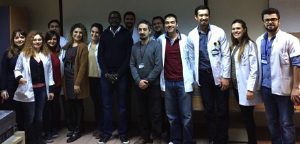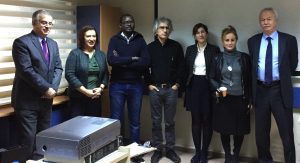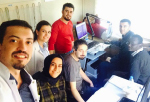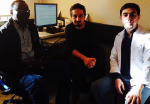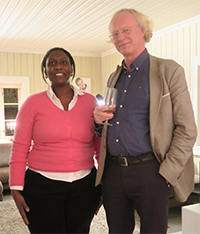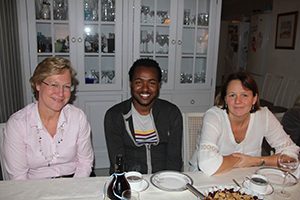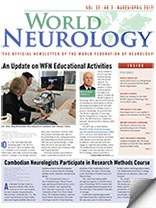By Peter J. Koehler
Most neurologists will know about the Brown-Séquard syndrome, comprising an ipsilateral paresis and proprioception disorder with contralateral pain and temperature disturbances, resulting from hemisection of the spinal cord.
 Charles-Edouard Brown-Séquard wrote his first publication on this finding between 1846 and 1849, starting at age 29. Born 200 years ago and raised on the isle of Mauritius, he moved to Paris in 1838 to study medicine. He worked at the private laboratory of physiologist Martin-Magron. This experience influenced him for the rest of his life.
Charles-Edouard Brown-Séquard wrote his first publication on this finding between 1846 and 1849, starting at age 29. Born 200 years ago and raised on the isle of Mauritius, he moved to Paris in 1838 to study medicine. He worked at the private laboratory of physiologist Martin-Magron. This experience influenced him for the rest of his life.
Possibly because of his republican ideas, he left France after the coup d’état of 1851 by Louis Bonaparte, the later emperor Napoleon III. He went to Philadelphia with a letter of recommendation written by Paul Broca.
Later, Brown-Séquard worked in London, becoming one of the first physicians at the National Hospital for the Paralyzed and Epileptic. He was considered an expert in epilepsy.1 From 1864-1866 (with interruptions), he was professor at Harvard University. He founded several journals, including Journal de la Physiologie (1858, Paris) and Archives de Physiologie normale et pathologique (in 1868 with Charcot and Vulpian).
In 1878, he succeeded Claude Bernard as the chair of physiology at the Collège de France in Paris. This brought more rest to someone who is said to have traveled the ocean 60 times. He worked and lectured at many places, in particular France, England, and the United States, but also on Mauritius. This restless traveling had several reasons, among which his birth at Mauritius, that was French originally, but became English following the defeat of Napoleon.
His father (Brown), whom he never met, was a sea captain from Philadelphia and died before his birth. Charles-Edouard added his mother’s name early in his career. Although a physician, his heart was always in the physiology laboratory, and he was always looking for such an appointment.
Spinal Cord Experiments
 His 1846 thesis Recherches et expériences sur la physiologie de la moelle épinière described the fact that section of the posterior columns did not lead to loss of sensation, concluding that other parts of the spinal cord should contribute to the conduction of sensory impressions. In 1849, he found that hemisection of the spinal cord did not result in ipsilateral sensory loss. This is in contrast to earlier findings,2 but in contralateral hypalgesia.3,4 Although he worked on the spinal cord mainly between 1846-1855, he would return to the subject later.
His 1846 thesis Recherches et expériences sur la physiologie de la moelle épinière described the fact that section of the posterior columns did not lead to loss of sensation, concluding that other parts of the spinal cord should contribute to the conduction of sensory impressions. In 1849, he found that hemisection of the spinal cord did not result in ipsilateral sensory loss. This is in contrast to earlier findings,2 but in contralateral hypalgesia.3,4 Although he worked on the spinal cord mainly between 1846-1855, he would return to the subject later.
Understanding the Sympathetic Nerves
He worked on numerous other subjects, including rigor mortis and the action of the vasomotor nerves, in which he competed for priority with his predecessor at the Collège de France (Paris), Claude Bernard. Experimental observations that eventually elucidated the mechanism and function of the vasomotor nerves were carried out in the 1850s.
In November 1852, Bernard found that section of the cervical sympathetic led to increased blood flow, rise in facial temperature and miosis, the latter phenomenon, which he attributed to the discovery, more than a century earlier, by his compatriot Pourfour du Petit (1727). However, in contrast to Brown-Séquard, Bernard did not understand the observed phenomena as, in his understanding, the sympathetic was considered the producer of the animal warmth. Therefore, he expected the contrary, notably cooling of the face and was quite surprised. In August 1852, Brown-Séquard published the results of his animal experiments during his stay in Philadelphia. He had galvanized (probably he meant faradized, using an induction coil invented by Emil Du Bois-Reymond) the cervical sympathetic of several animals and noticed constriction of the blood vessels in the ear and diminished temperature of the facial skin.
When Du Bois-Reymond, himself a migraine sufferer, published a paper stating that migraine was not a disease of the brain or cranial blood vessels, but of the cilio-spinal center in the spinal cord, leading to an increased sympathicotonic (vasoconstrictive) influence on the blood vessels of one side of the head, Brown-Séquard presented arguments to the contrary. From his animal experiments and clinical observations, he had concluded that stimulation of the cervical sympathetic causes epileptic seizures, rather than migraine attacks. He opined that Du Bois-Reymond’s observations better fit a sympathicoparalytic (vasoparalytic) model of migraine, in which he was seconded by other physicians, including Friedrich Wilhelm Möllendorff, until Peter Wallwork Latham proposed to unify both theories.5
Expert in Epilepsy
Brown-Séquard’s physiological and clinical work on epilepsy led him to be considered an expert in the field. His spinal cord experiments in the early 1850s resulted in observations that he interpreted as epileptiform convulsions originating in the spinal cord. His observation of convulsions in guinea pigs following spinal cord sections, and that their offspring showed the same phenomena, led to his idea of artificially induced hereditary epilepsy.
The ideas were used by Charles Darwin, who referenced him in several of his publications. Brown-Séquard realized it was not the same type of epilepsy as in human beings.6 It was later suggested that the animals were suffering from lice on the paralyzed parts. As for the clinical observation, it is important to realize that the brain was considered not irritable at the time (up to the famous 1870 experiments by Fritsch and Hitzig in Berlin). In Brown-Séquard’s concept, a reflex mechanism from the periphery conducted by nerves to the central nervous system was considered essential.
Antilocalizer Networks
Following Broca’s proof of cerebral localization of aphasia/aphemia in 1861, Brown-Séquard, although being a founding member of Broca’s Société d’Anthropologie, where the aphasia case was presented, made many observations that were not in agreement with the localization concept. He objected to the theory of circumscribed localization of functions in the brain, which prevailed at the time. He even warned against the use of the theory in brain surgery, which was emerging.7 He believed that many of his observations in humans and experimental animals could not be explained by the current of localization.
His own notion of localization was dynamic and based on the principles of distant action (action à distance), involving inhibition and excitation. (He called it dynamogénie. He probably coined the term dynamogénie, development of energy or power, in 1879, although he had come across the phenomenon itself when he performed his experiments on the spinal cord in 1840.) Irritation in one location of the nervous system may be transmitted to another part where it may change its function dynamically.
He presented this theory of “réseau de cellules anastomosées”(network of anastomized cells) in 1875 to the Société de Biologie. Cells serving the same function were supposed to be interconnected. Nerve cells endowed with any of the cerebral functions, instead of forming a cluster as is supposed, are disseminated through the whole encephalon, so that considerable alterations or destructive lesions can exist in one of the cerebral hemispheres, or in both, without the loss of voluntary movements of sensibility, or of any other brain function. Brown-Séquard defended his theories several times in papers and during meetings, including those at the Société de Biologie in the 1870s, where he debated with Charcot.
With this model, he was able to explain the fact that damage in several locations of the central nervous system may produce the same effect, and to account for observations that some functions remain unimpaired despite extensive brain injury.8 Based on these localization theories and new experimental findings, Brown-Séquard even withdrew the theory of crossed sensory action of the spinal cord in 1894,9 although he admitted that it remained valuable with respect to the clinical syndrome.
Although his arguments were not always valid, because they were sometimes based on imprecise observations, his dynamic model influenced “antilocalizers,” such as Friedrich Goltz, John Hughlings-Jackson and probably Constantin von Monakow and Charles Scott Sherrington. The theory is reminiscent of Sherrington’s later ideas. In fact, Sherrington referred to some of the ideas in 1893.10 One cannot claim that Brown-Séquard played a role in the development of modern network theories, yet one would wonder how interested he would have been reading about the relatively recent laws, to which all kinds of networks obey.11,12
Endocrinology
In the last phase of his career, Brown-Séquard studied the effects of (animal) testicular extracts. It was not the first time he subjected himself to experimentation. He injected the extracts, hoping it would have a rejuvenating effect. Noticing positive effects, he started the production of the drug in cooperation with his assistant Jacques-Arsène d’Arsonval.
They offered extracts to colleagues, without charge, in order to let them try it on elderly patients. Brown-Séquard’s first presentation on the subject was before the Société de Biologie de Paris in 1889. Two years later, George Murray presented his ideas on the treatment of myxoedema with thyroid extracts from a sheep at a meeting in England.13 Probably as a consequence of Brown-Séquard’s claims, he was ridiculed, by a senior colleague who suggested this would be like treating locomotor ataxia with an emulsion of spinal cord. Although Brown-Séquard had serious intentions with his studies on this subject, introducing organotherapy in 1893, public reception was unfavorable, which harmed his reputation. Nevertheless, his contribution to endocrinology was acknowledged by several scientists, including the Swiss surgeon Theodor Kocher, who referred to him in his Nobel Award lecture of 1909. Brown-Séquard is still considered the father of endocrinology.
As events in science and medicine are often reflected in literature, Brown-Séquard may be recognized in the 20th volume of the Rougon-Macquart novel series by Emile Zola, Le Docteur Pascal. It is about the country physician Pascal Rougon, who made a genealogical tree of his own family with the purpose of studying heredity. He noted interesting details about his family members, proving that degenerative traits are inherited.
The concept of degeneration was a popular scientific issue at the end of the 19th century, following the degeneration ideas in psychiatry of Bénédict Augustin Morel and Valentin Magnan. Zola staged Rougon not just as a physician, but also as a scientist. He extracts sheep brains and injects the material into patients. Although considering himself to be successful at the beginning, he finally realized the placebo effect and turns to the injection of water. One day, experimenting with organ extracts, he is criticized by his relatives:
‘… il est encore a` sa cuisine du diable!’
[… he is still in his devilish kitchen…], referring to his home laboratory.14, 15
Additional reading:
Michael J. Aminoff: Brown-Séquard: An improbable genius who transformed medicine. New York, Oxford University Press, 2011
References:
1 Koehler PJ. Brown-Séquard’s spinal epilepsy. Med Hist. 1994;38:189-203.
2 Koehler PJ, Endtz LJ. Between Magendie and Brown-Séquard: Isaäc van Deen’s spinal hemisections. Neurology. 1989;39:446-8.
3 Brown-Séquard CE. Recherches et expériences sur la physiologie de la moelle épinière. Paris, Rignoux, 1846
4 Koehler PJ, Endtz LJ. The Brown-Séquard syndrome. True or false? Arch Neurol. 1986;43:921-4.
5 Koehler PJ. Brown-Séquard’s comment on Du Bois-Reymond’s “hemikrania sympathicotonica”. Cephalalgia. 1995;15:370-2.
6 Koehler PJ. Brown-Séquard’s spinal epilepsy.Med Hist 1994; 38:189–203.
7 Brown-Séquard CE. The localization of the functions of the brain applied to the use of the trephine. Lancet 1877;107–8
8 Koehler PJ. Brown-Séquard and cerebral localization as illustrated by his ideas on aphasia J Hist Neurosci 1996;5:26–33.
9 Brown-Séquard CE. Remarques à propos des recherches du Dr. F.W.Mott sur les effets de la section d’une moitié latérale de la moelle épinière. Arch Physiol 1894; 26:195–8
10 oehler PJ.Brown-Séquard’s localization concept: the relationship with Sherrington’s “integrative action” of the nervous system. In: Rose, FC (ed): Neuroscience across the centuries. London, Smith-Gordon, 1989, pp.135–8
11 Stam CJ, Reijneveld JC. Graph theoretical analysis of complex networks in the brain. Nonlinear Biomed Phys 2007;1:3.
12 Koehler PJ. Book review essay: An improbable genius? On Michael J Aminoff’s Brown-Séquard: An improbably genius who transformed medicine. Brain 2011;134:1864-7.
13 Welbourn RB. The emergence of endocrinology. Gesnerus. 1992;49 Pt 2:137-50.
14 Koehler PJ. Charcot, la Salpêtrière, and hysteria as represented in European literature. Prog Brain Res. 2013;206:93-122.
15 Koehler PJ. About medicine and the arts. Charcot and French literature at the fin-de siècle. J. Hist. Neurosci. 2001;10: 27–40.
Peter J. Koehler is the editor of this history column. He is a neurologist at Zuyderland Medical Centre in Heerlen, The Netherlands. He is also co-editor of the Journal of the History of the Neurosciences. Visit his website at www.neurohistory.nl.
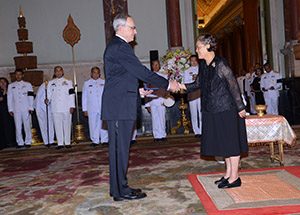
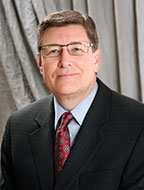
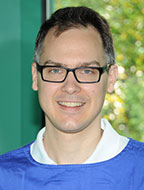
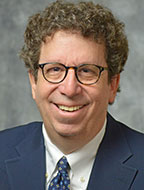
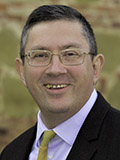
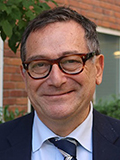
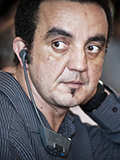
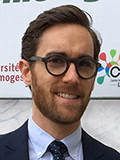
 World Brain Day 2017 will be centered on stroke, and will be jointly prepared and celebrated with the World Stroke Organization. This topic emphasizes the importance of stroke and should alert towards prevention and introduce advances in treatment.
World Brain Day 2017 will be centered on stroke, and will be jointly prepared and celebrated with the World Stroke Organization. This topic emphasizes the importance of stroke and should alert towards prevention and introduce advances in treatment.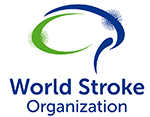 We hope that many national societies will be able to join us again this year. Material for the campaign, as well as suggestions for press releases, will follow.
We hope that many national societies will be able to join us again this year. Material for the campaign, as well as suggestions for press releases, will follow.